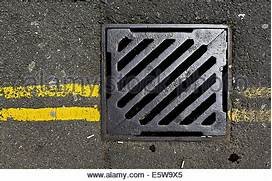I am concerned about exposed-conductive-parts and extraneous-conductive-parts and bonding. If a metal road drain cover is located next to, and in reach of a metal street light column, should the two be bonded together?


should the two be bonded together?
Not for LV installations. It might be different in special circumstances if we are considering HV installations (BS EN 50522/BS EN 61936-1) or considering rail traction supplies.
In BS 7671, Reg 714.411.3.1.2 covers this precise scenario.
Really? How is that achievable?
Well, within road tunnels, if the drainage system gulleys and pipes (and those of other services) are metal, you will often find those bonded in various places to the electrical services ... multiple times if there are a number of load-centres, e.g. shafts, but unless there's metal-metal contact between the metal drainage pipes and grid iron, probably the grid iron wouldn't be bonded.
We're about to take you to the IET registration website. Don't worry though, you'll be sent straight back to the community after completing the registration.
Continue to the IET registration site